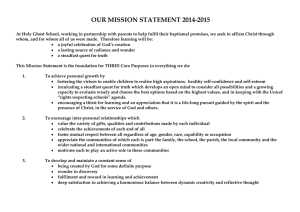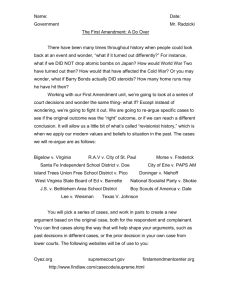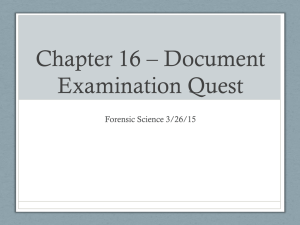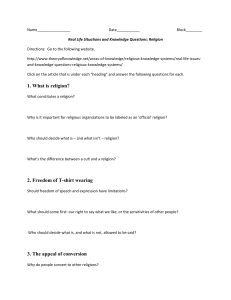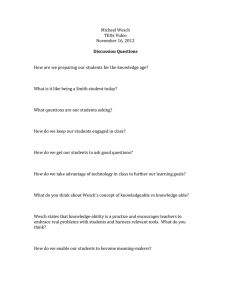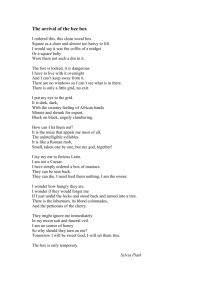Michael Wesch talk at Suffolk University - “The End of... June 2, 2015 By Floyd Cheung
advertisement
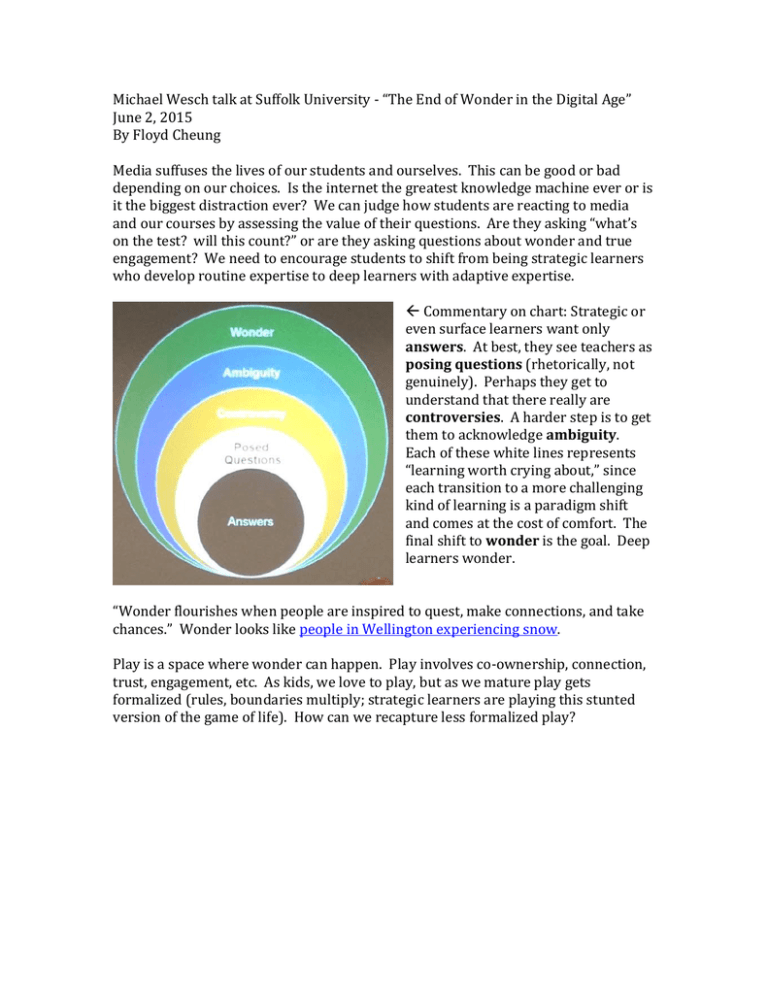
Michael Wesch talk at Suffolk University - “The End of Wonder in the Digital Age” June 2, 2015 By Floyd Cheung Media suffuses the lives of our students and ourselves. This can be good or bad depending on our choices. Is the internet the greatest knowledge machine ever or is it the biggest distraction ever? We can judge how students are reacting to media and our courses by assessing the value of their questions. Are they asking “what’s on the test? will this count?” or are they asking questions about wonder and true engagement? We need to encourage students to shift from being strategic learners who develop routine expertise to deep learners with adaptive expertise. Commentary on chart: Strategic or even surface learners want only answers. At best, they see teachers as posing questions (rhetorically, not genuinely). Perhaps they get to understand that there really are controversies. A harder step is to get them to acknowledge ambiguity. Each of these white lines represents “learning worth crying about,” since each transition to a more challenging kind of learning is a paradigm shift and comes at the cost of comfort. The final shift to wonder is the goal. Deep learners wonder. “Wonder flourishes when people are inspired to quest, make connections, and take chances.” Wonder looks like people in Wellington experiencing snow. Play is a space where wonder can happen. Play involves co-ownership, connection, trust, engagement, etc. As kids, we love to play, but as we mature play gets formalized (rules, boundaries multiply; strategic learners are playing this stunted version of the game of life). How can we recapture less formalized play? Wesch asks us to think about ways to make play a part of our courses. He also asks us to reconsider our priorities when designing courses. Normally, we think about what content and/or skills we are teaching, how we teach, why we teach, and who is in the classroom. He encourages us to reverse the order of priorities to who, why, how, and what. “What transformations can we imagine for our students?” Why needs to be answered not only by “vocation” and “citizenship” but also by “soulmaking.” Society tells us who we are via advertising and stereotypes. We need to reassert control over who we are and help our students figure out who they are on their own terms. Do not think of a student as an A, B, or C student. A students may bear burdens that we do no perceive; social media leads us to put on a face to the world that may not reflect reality (see Kate Fagan, “Split Image”). B students may have internalized problematic notions of their own selfhood. C students may have “superpowers” that traditional schooling doesn’t recognize or reward. Examples and ideas for making all of this happen: invite students to lunch, get to know who they are, ban small talk, ask only important questions like these in small classes, get information on each student via an application and introduce them and their “superpowers” on the first day of class create a quest in every class; get students to work together on this quest; Wesch often uses digital storytelling as one way for his students to share the results of their quest with others Wesch has gotten his students to do in situ work by having them live with seniors in a retirement center; he has gotten his students to experience civilization formation/evolution by having them play games on campus that simulate this a big ongoing quest is the online remapping of his town showing good bike paths, green zones, danger zones, etc. final exam can involve embedding GPS coordinates as answers (e.g., page numbers of key ideas or quotations from class readings) that lead students to converge at a location. celebration and storytelling can occur at the location. quest, connection . . . see Women’s Ways of Knowing, Courage to Teach, Whistling Vivaldi to save instructor time, try to get your teaching and research to overlap as much as possible Wesch manages to do all this while teaching a five-course load: 450, 200, 200, 10, and 10 at Kansas State University
